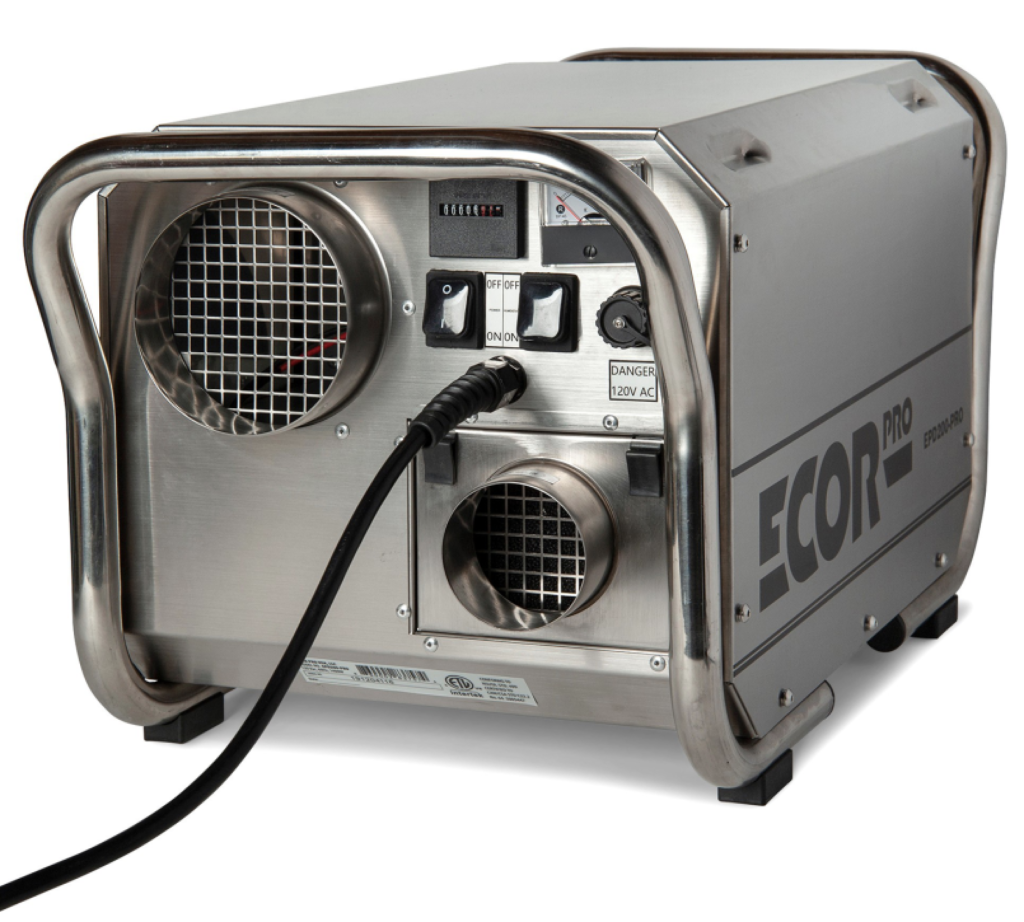
Tips For Choosing The Right Portable Indoor Dehumidifier
Tips For Choosing The Right Portable Indoor Dehumidifier
By: Brothers Equipment And Supply
Indoor air quality is an essential factor that impacts your overall health and comfort.
Excessive humidity can lead to several problems, including the growth of mould and mildew, increased allergens, and even damage to furniture and structural components of your home.
A portable indoor dehumidifier is an effective solution to manage these issues, providing both convenience and efficiency.
This guide will help you choose the right dehumidifier for your needs by discussing key factors to consider, the different types available, and how to avoid common mistakes when purchasing one.
Let’s get right into it!
What Is A Portable Indoor Dehumidifier?
A portable indoor dehumidifier is a compact, movable device designed to reduce and maintain optimal humidity levels in specific areas of your home. Unlike whole-house or industrial dehumidifiers, portable models are ideal for smaller, enclosed spaces such as bedrooms, basements, or kitchens. They are generally lightweight and equipped with wheels or handles, making them easy to move between rooms.
Portable dehumidifiers work by drawing moist air through a cooling coil, which condenses the water vapour into liquid form.
This liquid is then collected in a water tank or drained through a hose, while the dry air is released back into the room. These units are perfect for managing excess moisture in spaces that are prone to dampness or condensation.
Benefits of Using a Portable Indoor Dehumidifier
A portable dehumidifier offers numerous benefits that go beyond just improving air quality:
Prevents Mould and Mildew Growth: High humidity levels can cause mould and mildew to grow, especially in damp areas like basements or bathrooms. A dehumidifier helps prevent these issues by reducing moisture.
Reduces Allergens: Dust mites, mould spores, and other allergens thrive in humid environments. By controlling humidity, dehumidifiers reduce the presence of these allergens, making your home healthier.
Protects Your Home: Excess moisture can damage walls, floors, and furniture. Wooden surfaces can warp, and paint can peel. A dehumidifier helps protect these materials by maintaining a balanced humidity level.
Increases Comfort: High humidity can make a room feel warmer than it actually is. By removing moisture, a dehumidifier helps regulate indoor temperatures and makes your living space more comfortable.
Key Factors To Consider When Choosing A Portable Indoor Dehumidifier
Room Size
The first and most important factor to consider is the size of the room where the dehumidifier will be used. Portable dehumidifiers come in various sizes and capacities, typically measured in pints of water removed per day. The larger the room, the higher the capacity you’ll need. For instance, a 30-pint dehumidifier works well in a space of 300-500 square feet, while a 50-pint unit is better for larger areas up to 1,000 square feet.
Humidity Levels
The current humidity level in your home is another important consideration. If your space is only slightly humid, a smaller unit will suffice. However, for damp or wet environments, you’ll need a higher-capacity dehumidifier. Ideally, indoor humidity levels should range between 30-50% for optimal comfort and health.
Energy Efficiency
Running a dehumidifier continuously can add to your electricity bill, so it’s wise to choose an energy-efficient model. Look for units with the Energy Star certification, as they meet strict efficiency guidelines and use up to 30% less energy than non-certified models.
Noise Level
If you plan to use the dehumidifier in a living room or bedroom, consider the noise level. Dehumidifiers can produce a hum while in operation, which can be disruptive in quiet environments. Many models specify their noise output in decibels (dB), with anything below 50 dB considered relatively quiet.
Portability Features
A truly portable dehumidifier should be easy to move between rooms. Look for features like caster wheels, handles, and compact designs. This is particularly important if you plan to use the unit in different parts of your home, such as moving it from the basement to the bedroom.
Drainage Options
Most portable dehumidifiers come with a water tank that needs to be emptied regularly. However, for more convenience, you may want to choose a model that offers continuous drainage through a hose connection or one with a built-in pump that automatically removes water.
Maintenance and Filter Type
Regular maintenance is necessary to keep your dehumidifier running efficiently. Most units come with filters that need to be cleaned or replaced periodically. Choosing a dehumidifier with a washable or easy-to-replace filter will make this process easier and more cost-effective over time.
Types Of Portable Indoor Dehumidifiers
Desiccant Dehumidifiers
These units use a desiccant material, like silica gel, to absorb moisture from the air. They are more effective in colder environments, such as basements or unheated rooms, where refrigerant dehumidifiers may not work efficiently. Desiccant models are generally quieter and more compact, making them a good choice for smaller spaces.

Refrigerant Dehumidifiers
These are the most common type of portable dehumidifiers. They use a refrigeration coil to cool the air and condense moisture. Refrigerant dehumidifiers are highly effective in warm, humid conditions and are the go-to option for rooms with significant moisture issues.
Smart Dehumidifiers
Equipped with Wi-Fi or smartphone connectivity, smart dehumidifiers allow you to monitor and control the humidity levels in your home remotely. These units can send alerts when the water tank needs to be emptied or when the humidity levels fall outside your preferred range.
Common Mistakes To Avoid When Buying A Portable Indoor Dehumidifier
Choosing the Wrong Size
One of the most common mistakes is selecting a dehumidifier that’s either too small or too large for the space. An undersized unit won’t be able to effectively remove moisture, while an oversized unit may result in unnecessary energy consumption.
Ignoring Energy Efficiency
Overlooking energy consumption can lead to higher utility bills. Always choose an energy-efficient model to save money in the long run.
Not Considering Noise Levels
If the dehumidifier will be placed in a living or sleeping area, noise is a critical factor. Look for models that are designed to operate quietly, especially in bedrooms or offices.
Forgetting About Drainage
Manual draining can be a hassle, especially if the dehumidifier is removing large amounts of moisture. Opt for a model with continuous drainage or a built-in pump if you want to minimize maintenance.
FAQs
How often should I empty the water tank on a dehumidifier?
It depends on the size of the water tank and the humidity level, but most portable dehumidifiers need to be emptied once or twice a day. Models with continuous drainage can be left unattended for longer periods.
Can I use a dehumidifier in winter?
Yes, but refrigerant dehumidifiers may not work as effectively in colder temperatures. Desiccant dehumidifiers are better suited for cold environments.
What size dehumidifier do I need for a basement?
For a moderately damp basement (around 500-1,000 square feet), a 50-pint dehumidifier is usually sufficient. For larger or wetter basements, consider a 70-pint unit.
Can a dehumidifier help with mould problems?
Yes, by reducing moisture levels, a dehumidifier can help prevent the growth of mould. However, existing mould should be treated by professionals.
How do I know if my home’s humidity levels are too high?
You can measure humidity with a hygrometer. If the levels consistently exceed 50%, it may be time to invest in a dehumidifier.
Can I run a dehumidifier all day?
Yes, most dehumidifiers are designed to run continuously. However, you may want to turn them off periodically to save energy or when the desired humidity level is reached.
Will a dehumidifier reduce heating costs?
While a dehumidifier won’t directly reduce heating costs, maintaining optimal humidity levels can make your home feel more comfortable at lower temperatures.
Do portable dehumidifiers need to be vented?
No, portable dehumidifiers don’t require venting like air conditioners. They work by removing moisture from the air and do not produce exhaust.
How often should I clean the filter on my dehumidifier?
Filters should be cleaned or replaced every few months, depending on usage and the manufacturer’s recommendations.
What is the best humidity level for indoor comfort?
The ideal indoor humidity level is between 30-50%, which helps prevent mould, dust mites, and other moisture-related problems.
In conclusion, choosing the right portable indoor dehumidifier involves considering factors like room size, humidity levels, energy efficiency, and maintenance. By selecting a unit that fits your needs, you can improve air quality, protect your home from moisture damage, and create a more comfortable living environment.
If you have any questions about our article, “Choosing the Right Portable Indoor Dehumidifier” or need a portable dehumidifier email us at sales@brothers-equipment.com or connect with us on social media.
